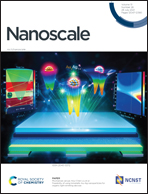A high-accuracy machine-learning water model for exploring water nanocluster structures†
Abstract
Water, the most important molecule on the Earth, possesses many essential and unique physical properties that are far from completely understood, partly due to serious difficulties in identifying the precise microscopic structures of water. Hence, identifying the structures of water nanoclusters is a fundamental and challenging issue for studies on the relationship between the macroscopic physical properties of water and its microscopic structures. For large-scale simulations (at the level of nm and ns) of water nanoclusters, a calculation method with simultaneous accuracy at the level of quantum chemistry and efficiency at the level of an empirical potential method is in great demand. Herein, a machine-learning (ML) water model was utilized to explore the microscopic structural features at different length scales for water nanoclusters with a size up to several nm. The ML water model can be employed to efficiently predict the structures of water nanoclusters with a similar accuracy to that of density functional theory and with substantially lower computational resource demands. To validate the low-lying structure search results with experimental spectral results, an ML water model combined with velocity autocorrelation function analysis was used to simulate the vibrational spectra of water nanoclusters with up to thousands of water molecules. By comparing the simulated and experimentally recorded vibrational spectra, the atomic structures determined by a simulation based on the ML water model are all verified. To demonstrate its ability to represent water's structural evolution at large length and time scales, the ML water model was employed to model the structural evolution during the crystal–liquid transition, and the phase transition temperatures of water clusters with different sizes were precisely predicted. The ML water model provides an efficient theoretical calculation tool for exploring the structures and physical properties of water and their relationships, especially for clusters with relatively large sizes and processes with relatively long durations.



 Please wait while we load your content...
Please wait while we load your content...